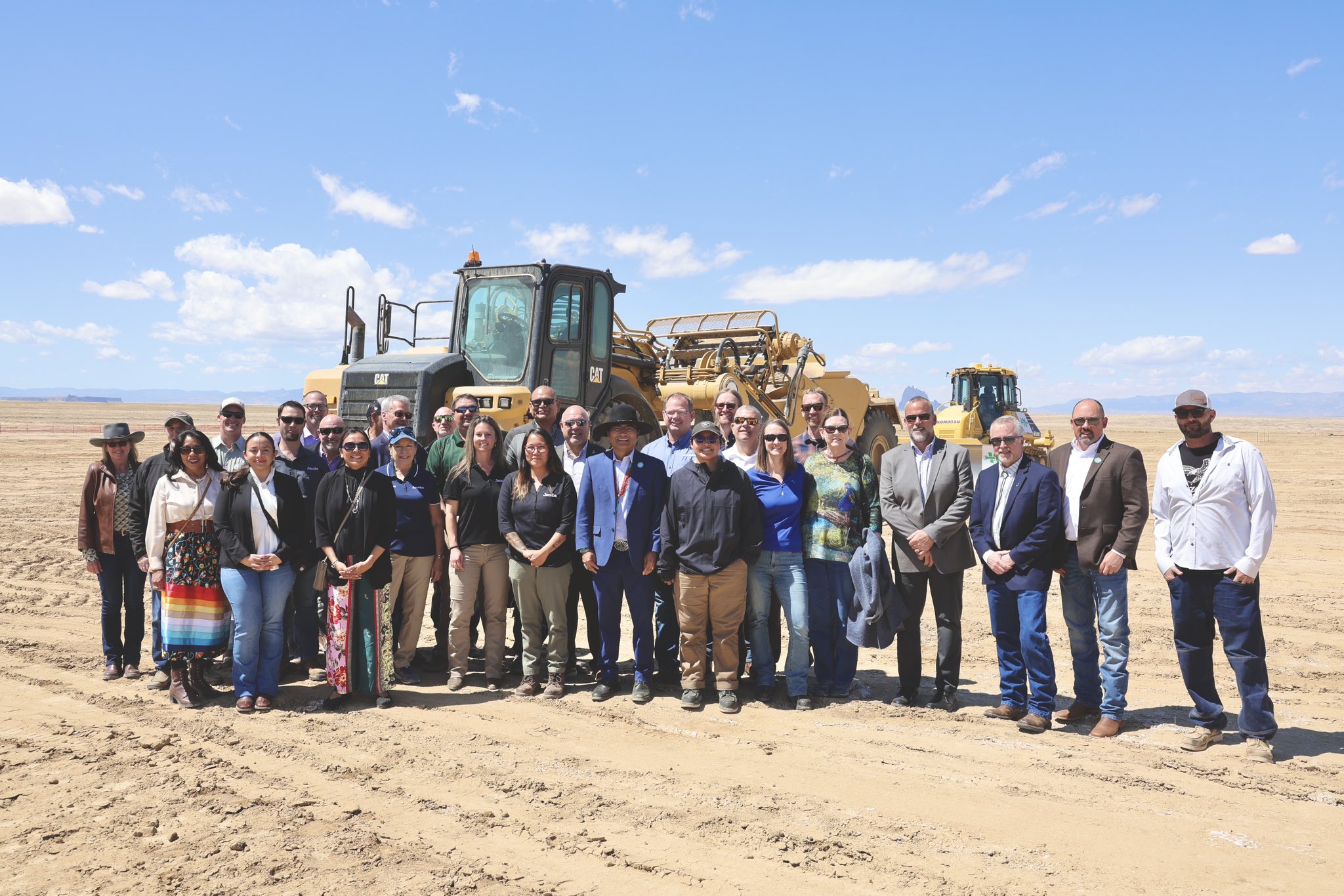
- Details
- By Native News Online Staff
Construction has officially begun on a new $267 million water treatment facility along Navajo Route 36 near Shiprock, New Mexico. The San Juan Lateral Water Treatment Plant, expected to be completed by late 2028, will play a vital role in securing clean drinking water for more than 200,000 people over the next four decades, including communities in Arizona.
Navajo Nation President Buu Nygren led the groundbreaking ceremony, joined by Speaker of the Navajo Nation Council Crystalyne Curley, New Mexico Indian Affairs Secretary Josette Monette, Policy Advisor James Big Mountain, and other key leaders and stakeholders.
Once operational, the plant will treat up to 18.8 million gallons of water daily—meeting Safe Drinking Water Act standards—with the capacity to double that output to 37.6 million gallons per day as needed. In addition to delivering long-term water security, the facility is expected to create 200 jobs during its development.
Bart Deming, Four Corners Construction Office Project Engineer and Manager of Bureau of Reclamation, Robert Kirk, Navajo Water Resources Principal Hydrologist, Jason John, Director of Navajo Water Resources, and Haatali Richard Anderson, opened the agenda for the blessing of the treatment plant. Greg Fischer, Vice President of Jacob’s Design Build Operation and Management, Tanya Trujillo, New Mexico Governors Water Policy Advisor, Teresa Leger Fernandez, New Mexico Representative, and David Palumbo, Acting Commissioner of Bureau of Reclamation, all shared their vision for the water treatment plant, a big feature of the Navajo Gallup Water Supply Project.
“The first year I was in office, I got to choose 10 projects, and I chose this one,” said Leger-Fernandez.
This transformative project is the result of a strong partnership with the U.S. federal government and underscores a shared commitment to uphold the Treaty of 1868, honoring the sovereignty and well-being of the Navajo Nation and surrounding tribal communities.
More Stories Like This
Native News Weekly (August 25, 2024): D.C. BriefsUS Presidents in Their Own Words Concerning American Indians
Indigenous Actor Elaine Miles Reports Detention by Alleged ICE Agents
Happy Thanksgiving from Native News Online
Coming Up on Native Bidaské: Behind the Animation: Joey Clift Talks “Pow” and Native Storytelling
Help us tell the stories that could save Native languages and food traditions
At a critical moment for Indian Country, Native News Online is embarking on our most ambitious reporting project yet: "Cultivating Culture," a three-year investigation into two forces shaping Native community survival—food sovereignty and language revitalization.
The devastating impact of COVID-19 accelerated the loss of Native elders and with them, irreplaceable cultural knowledge. Yet across tribal communities, innovative leaders are fighting back, reclaiming traditional food systems and breathing new life into Native languages. These aren't just cultural preservation efforts—they're powerful pathways to community health, healing, and resilience.
Our dedicated reporting team will spend three years documenting these stories through on-the-ground reporting in 18 tribal communities, producing over 200 in-depth stories, 18 podcast episodes, and multimedia content that amplifies Indigenous voices. We'll show policymakers, funders, and allies how cultural restoration directly impacts physical and mental wellness while celebrating successful models of sovereignty and self-determination.
This isn't corporate media parachuting into Indian Country for a quick story. This is sustained, relationship-based journalism by Native reporters who understand these communities. It's "Warrior Journalism"—fearless reporting that serves the 5.5 million readers who depend on us for news that mainstream media often ignores.
We need your help right now. While we've secured partial funding, we're still $450,000 short of our three-year budget. Our immediate goal is $25,000 this month to keep this critical work moving forward—funding reporter salaries, travel to remote communities, photography, and the deep reporting these stories deserve.
Every dollar directly supports Indigenous journalists telling Indigenous stories. Whether it's $5 or $50, your contribution ensures these vital narratives of resilience, innovation, and hope don't disappear into silence.
 The stakes couldn't be higher. Native languages are being lost at an alarming rate. Food insecurity plagues many tribal communities. But solutions are emerging, and these stories need to be told.
The stakes couldn't be higher. Native languages are being lost at an alarming rate. Food insecurity plagues many tribal communities. But solutions are emerging, and these stories need to be told.
Support independent Native journalism. Fund the stories that matter.
Levi Rickert (Potawatomi), Editor & Publisher

